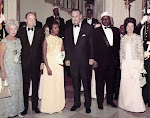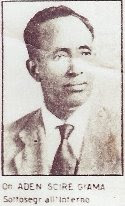Dan Simpson
 Last week an issue that is important to me — the future of Somalia and the Horn of Africa — was addressed at a local conference organized by the World Affairs Council of Pittsburgh.Among the briefings provided the student participants were three by representatives of the U.S. government. Unfortunately, they were distressingly disingenuous in presenting the U.S. role over the past 20 years that helped produce the tragedy that is Somalia today. They seemed to reflect the astonishing point of view that Americans don’t need to know what is being done in their name with their money.The International Student Summit on Crisis and Famine in the Horn of Africa took place at Baldwin High School, with video feeds from the World Affairs Council in Philadelphia and schools in Pakistan, Slovenia and Tanzania. It was a delight. For four hours, the students considered the whole range of issues affecting the Horn of Africa and Somalia after clearly having done a good deal of background preparation to hold such informed, intelligent discussions.Given the interdependence of the countries of the world, it is essential that Americans have a firm, informed grasp of international affairs. It also is critical to start while people are young and their minds are open and supple. From that derives the importance of such events as the World Affairs Council summit, which involved more than 500 students.Sessions dealt with various aspects of the situation in the Horn of Africa, including food and logistics; water, sanitation and hygiene; health; shelter; education; protection of vulnerable populations; communications and awareness; long-term food security; governance; regional security; and piracy — a plague off the Somali coast in the Gulf of Aden and Indian Ocean. Students from seven Pittsburgh-area high schools took part.
Last week an issue that is important to me — the future of Somalia and the Horn of Africa — was addressed at a local conference organized by the World Affairs Council of Pittsburgh.Among the briefings provided the student participants were three by representatives of the U.S. government. Unfortunately, they were distressingly disingenuous in presenting the U.S. role over the past 20 years that helped produce the tragedy that is Somalia today. They seemed to reflect the astonishing point of view that Americans don’t need to know what is being done in their name with their money.The International Student Summit on Crisis and Famine in the Horn of Africa took place at Baldwin High School, with video feeds from the World Affairs Council in Philadelphia and schools in Pakistan, Slovenia and Tanzania. It was a delight. For four hours, the students considered the whole range of issues affecting the Horn of Africa and Somalia after clearly having done a good deal of background preparation to hold such informed, intelligent discussions.Given the interdependence of the countries of the world, it is essential that Americans have a firm, informed grasp of international affairs. It also is critical to start while people are young and their minds are open and supple. From that derives the importance of such events as the World Affairs Council summit, which involved more than 500 students.Sessions dealt with various aspects of the situation in the Horn of Africa, including food and logistics; water, sanitation and hygiene; health; shelter; education; protection of vulnerable populations; communications and awareness; long-term food security; governance; regional security; and piracy — a plague off the Somali coast in the Gulf of Aden and Indian Ocean. Students from seven Pittsburgh-area high schools took part.The U.S. military role in Somalia was strengthened by the creation in 2008 of a new U.S. Africa Command, based in Stuttgart, Germany. This body needed a war to fight in Africa to justify its size and budget.If there were a coherent government in Somalia, there would be little or no piracy, since that phenomenon depends for its existence on chaos. Also partly a creature of chaos is the dire humanitarian situation, which includes some 4 million Somalis in need of food and other support, of whom 250,000 are in danger of starvation.On the day of the student conference, fighting heated up in Mogadishu, Somalia’s capital, with government and AU forces facing off against al-Shabab, causing multiple casualties. U.N. Secretary General Ban Ki-moon paid a surprise visit there Friday and announced that the United Nations would move its Somalia office from Nairobi, Kenya, to Mogadishu in January.Dan Simpson, a former U.S. ambassador, is a Post-Gazette associate editor (dsimpson@post-gazette.com, 412 263-1976). More articles by this authoRead more:



.jpg)











2 comments:
the most important in Somalia is sovereignty must belong to people of Somalia and there Representative
i think its time people stop addressing Shabaab as a monolithic entity that has writ large control over all clan / sub clan issues. Playing upon clan fissures (as Shabaab has done) is NOT the complete establishment of control, rather, its the ability to step into vacuums left unattended by indigenous / local administrations (and the TFG). Also, capitalizing on TFG corruption is NOT representative of Shabaab "winning over" the entire country with an al-Qaida message.
Post a Comment